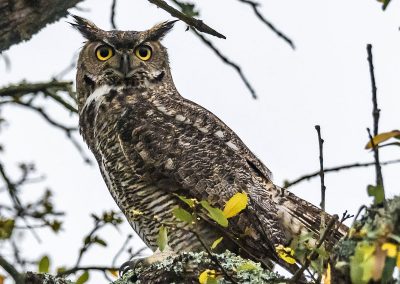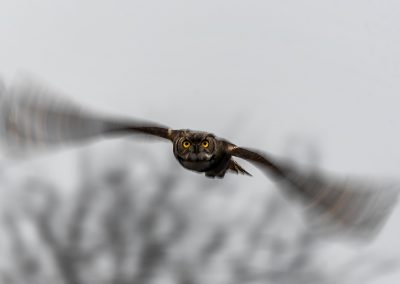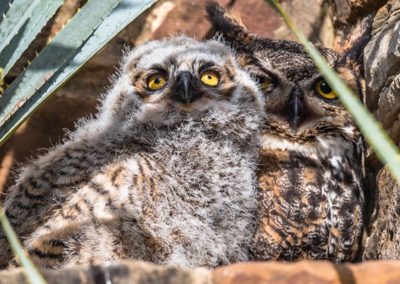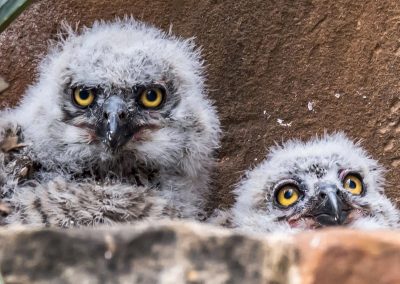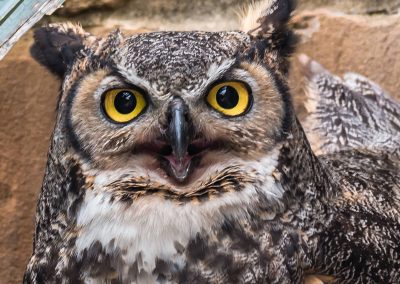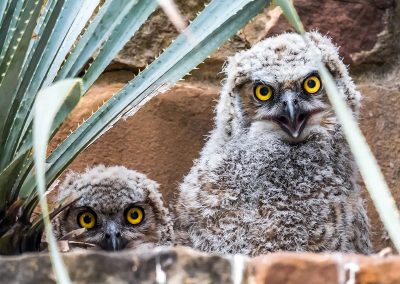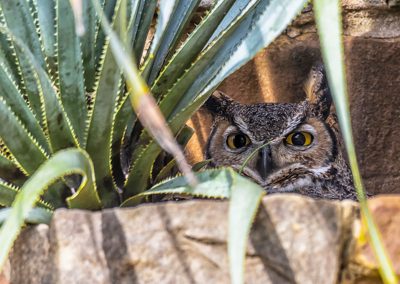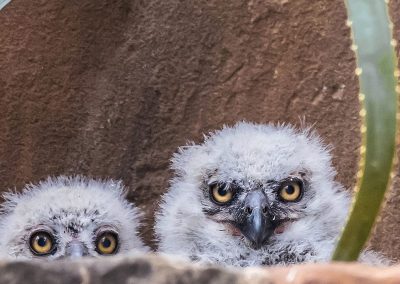MEET ATHENA
The Wildflower Center’s resident owl
May 20, 2024 Update: We’re thrilled to report that both owlets have fledged and are hanging out in nearby trees! Follow us on Instagram for the latest updates. And don’t fret — the Owl Cam will be back next year when Athena returns to her nest.
For more than a decade, the Wildflower Center has been home to a nesting pair of great horned owls (Bubo virginianus). Lucky for us — and our guests — the female, who we call Athena, nests in a very conspicuous place, right above the entrance to our Courtyard in the sotol (Dasylirion wheeleri) planter nestled in the north corner. When conditions are right and her eggs hatch into owlets, she provides a rare opportunity to view a wild great horned owl rearing her young.
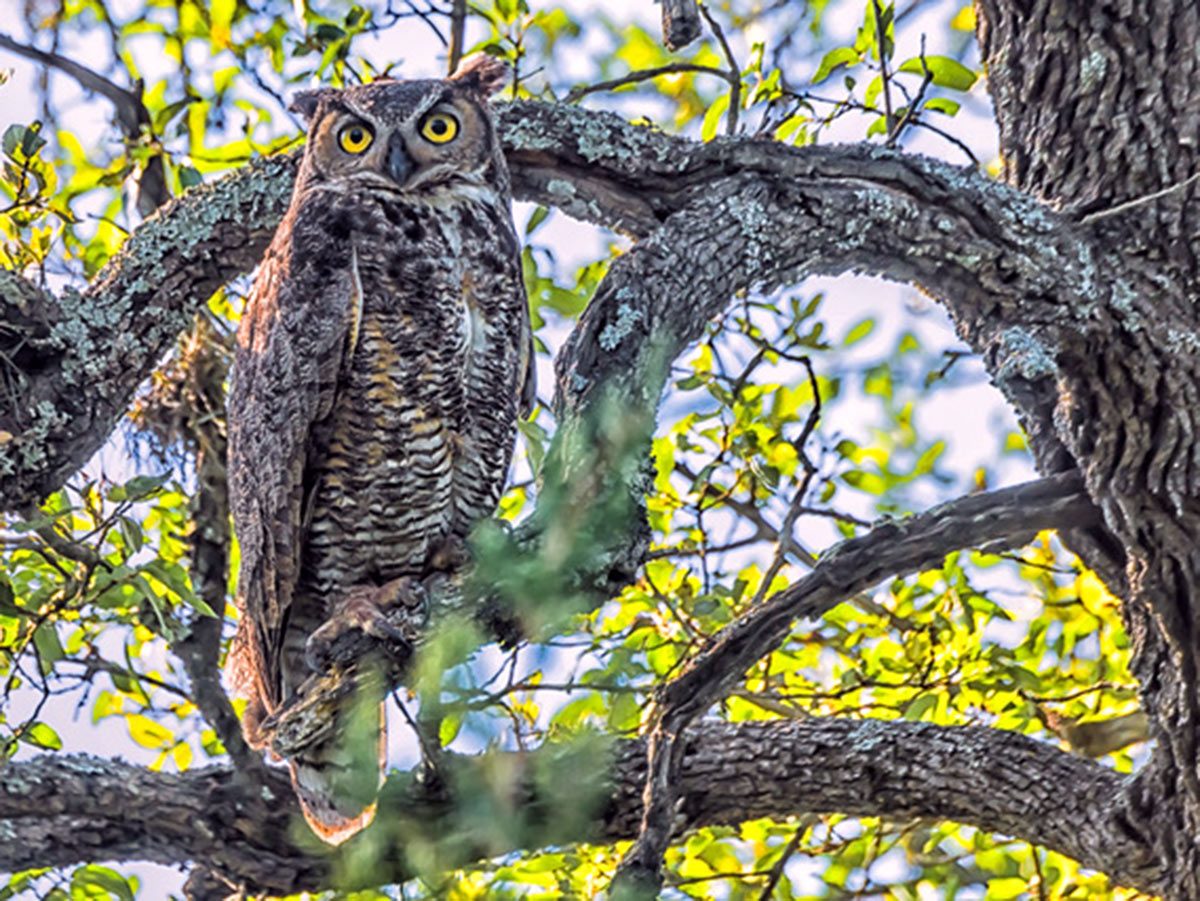
Athena, the mother owl, in an escarpment live oak near her nesting site. PHOTO Bill J. Boyd
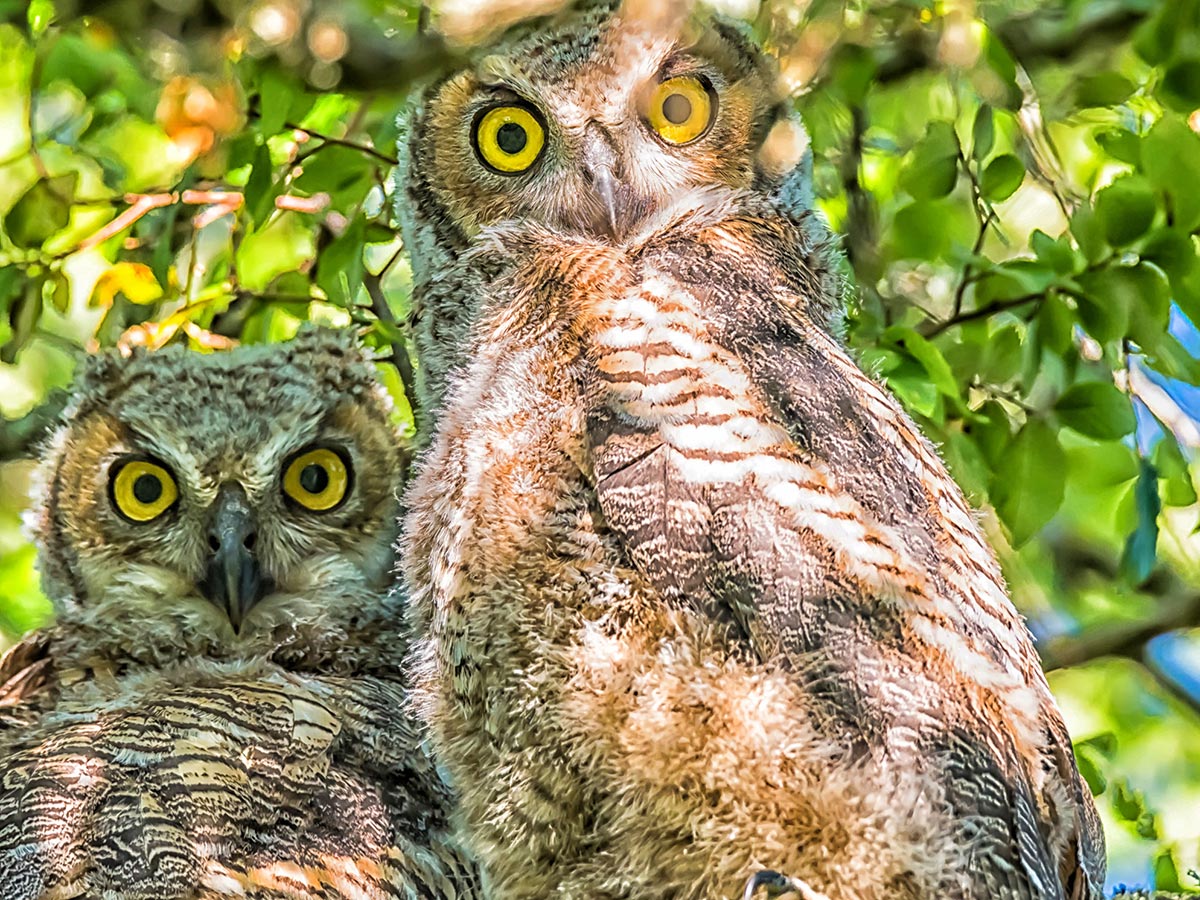
Athena’s 2020 owlets in a tree after fledging. PHOTO Bill J. Boyd
2024 TIMELINE
Athena arrived to the nest and laid an egg.
March 5:
Athena laid a second egg.
April 4:
First owlet hatched.
April 6:
Second owlet hatched.
May 14:
First owlet fledged.
May 19:
Second owlet fledged.
2023 TIMELINE
March 1:
Athena arrived to the nest.
March 2:
Athena left the nest.
March 3:
Athena returned and laid two eggs.
May 25:
Both owlets fledged.
2022 TIMELINE
March 9:
Athena arrived and laid two eggs.
March 22:
Athena abandoned her nest.
2021 TIMELINE
Feb. 3:
Athena arrived and laid two eggs
March 25:
Two owlets hatched
April 22:
First owlet fledged
May 2:
Second owlet fledged
2020 TIMELINE
Feb. 18:
Athena arrived to the nest and laid two eggs
April 13:
First owlet hatched
April 21:
Second owlet hatched
May 7:
First owlet fledged
May 9:
Second owlet fledged
2019 TIMELINE
Feb. 14:
Athena arrived to the nest
April 2:
One egg hatched
May 3:
Owlet fledged
2018 TIMELINE
Feb. 9:
Athena arrived to the nest
March 29:
First owlet hatched
April 3:
Second owlet hatched
April 27 – 29:
Both owlets fledged
2017 TIMELINE
Feb. 12:
Athena arrived to the nest
March 18:
Owlets began to hatch
March 27:
First owlet spotted
April 4:
Second owlet spotted
April 27:
First owlet fledged
April 30:
Second owlet fledged
2015 TIMELINE
Exact dates unknown:
Athena arrived to the nest and laid 3 eggs, all of which hatched successfully. This was the only year she had 3 owlets.
2012 TIMELINE
Exact dates unknown:
Athena nested at the Wildflower Center for the first time.
Great Horned Owl Facts
- Great horned owls are named for their prominent ear tufts (or horns). These “horns” are made up of feathers; they are not ears.
- The mother and father owls have very different jobs. The mother’s job is to incubate the eggs and to protect and feed the young. The father’s job is to hunt and deliver the prey to his family.
- How can we tell the male and female apart? Only the females sit on the nest; they have a special brood patch, which is designed to keep the eggs warm. The patch has lots of blood vessels that provide warmth to the eggs.
- Great horned owls usually lay 2 eggs but can lay up to 4. They lay their eggs over a period of days. The female will begin incubating once the first egg is laid, so the owlets hatch at different times.
- Adults have a wingspan of four feet but only weigh about five pounds.
- Great horned owls are very territorial; their territories can range from .1 to 1 square mile.
- Great horned owls have one of the broadest diets among owls. They will eat scorpions, smaller owls, rodents, rabbits and skunks. They are very opportunistic and generalists when it comes to what they eat.
- Owls cast pellets. These are made up of the indigestible parts (fur, bones and teeth) from their meal. When an owl eats a small animal, they swallow it whole. Most pellets are cast at roost before their next meal. If you find an owl pellet, you can learn a lot about the owls in your area and what they are eating. Whole skeletons can be put back together after dissecting a pellet. Biologists collect and dissect them to learn about owl diets.
For more information on great horned owls, see All About Birds.
HELP ATHENA SOAR
As a self-funded not-for-profit, we depend on donations to fulfill our mission. Support Athena’s habitat with a donation today.
Owl Family Photo Album
All photos by Bill J. Boyd
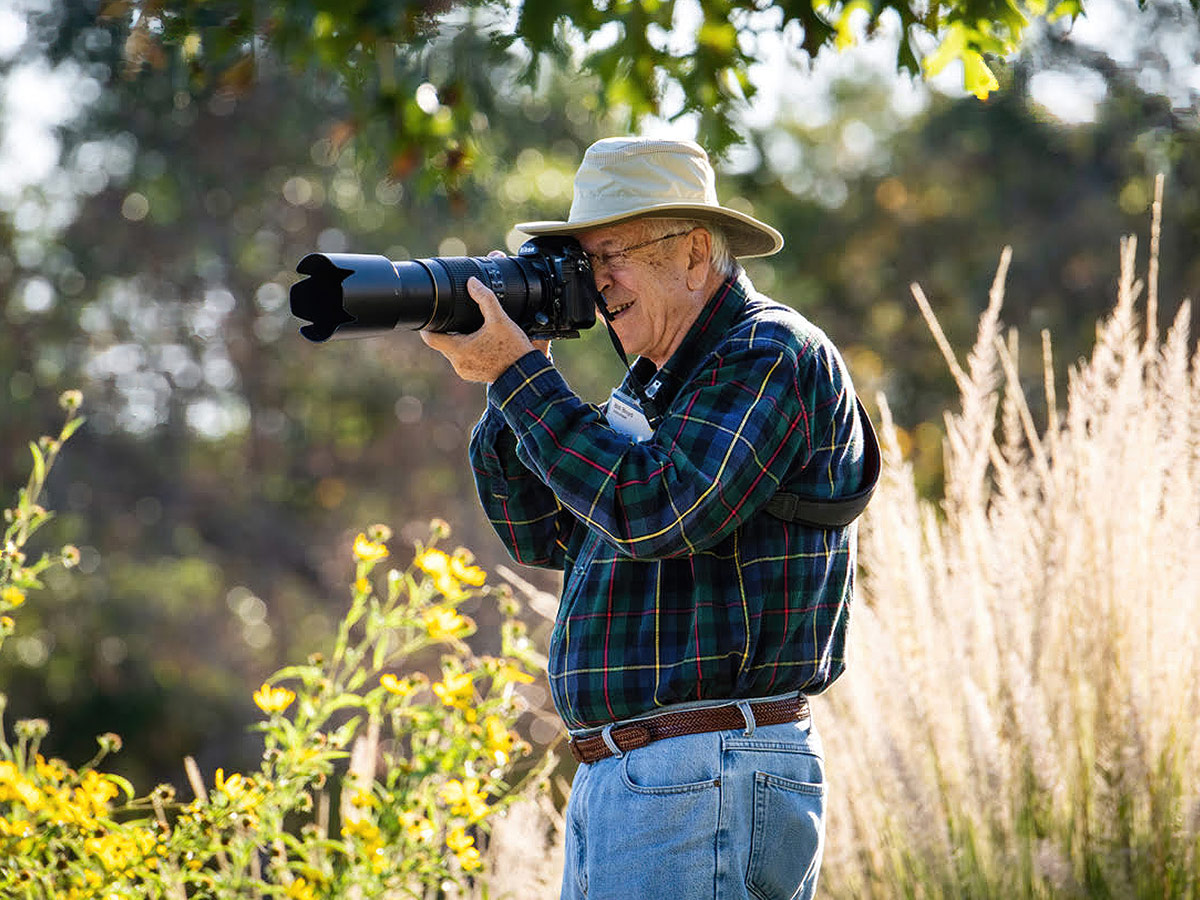
Bill J. Boyd
Volunteer Photographer
Bill is a Wildflower Center volunteer and freelance photographer who loves to visually explore life’s beautiful moments. Retired from Texas Instruments in 2000, he needed a hobby and discovered a passion for photography. His main interests are nature, wildlife and civic events. Bill has been photographing Athena and her owlets since 2012 and is often the first to know when she’s arrived each spring. Most of the images you see of Athena and her family are his, and the Center is extremely lucky to benefit from his efforts!

